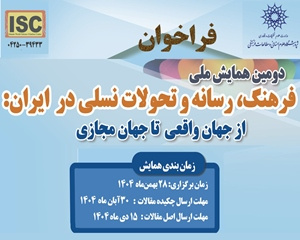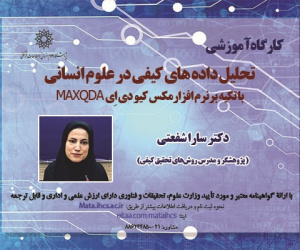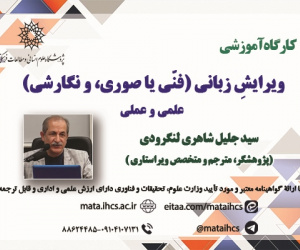واکاوی هرمنوتیکی گزاره های ارزشی در سازمان (مقاله علمی وزارت علوم)
درجه علمی: نشریه علمی (وزارت علوم)
آرشیو
چکیده
هدف: عبارت ارزش پیشنهادی، بیان شفاف و متقاعدکننده تجربه ای است که یک مشتری می تواند از پیشنهاد عرضه کننده خدمت یا محصول دریافت کند؛ با وجود این در کاربردهای مختلف این عبارت، به تحولات تاریخی آن توجه نشده و به مرور زمان در معنای آن، تفسیر مضاعف رخ داده است. افزون براین، ترجمه به عنوان ابزاری برای درکِ فهم و انتقال زبانی مقوله ها، به ویژه در بسترهای مختلف فرهنگی، همواره دستیابی به معنا و مفهوم مدنظر مؤلف اصلی را دشوار ساخته است؛ زیرا ترجمه فهمی است که مترجم از فهم و بیان مؤلف اصلی دارد و بر پایه آن واژه های مدنظر خود را انتخاب می کند؛ از این رو انتخاب واژه هایی که بیشترین ادراک از منظور مؤلف اصلی را فراهم کند، ضرورت می یابد. به همین سبب پژوهش حاضر درصدد بررسی معنایی معادل انگلیسی عبارت ارزش پیشنهادی است.روش: واکاوی با بهره گیری از مرور پدیدارشناسی هرمونتیک و بررسی هفت سند اصلی صورت گرفته است. به منظور گردآوری اطلاعات، از روش های اسنادی و مطالعات کتابخانه ای استفاده شده است.یافته ها: بر اساس یافته های پژوهش، معادل انگلیسی عبارت ارزش پیشنهادی، ماهیتی دوسویه دارد که در تعامل با مشتری ساخته می شود؛ از این رو، نیازمند مشارکت و تصدیق از سوی اوست. این در حالی است که ترجمان ارزش پیشنهادی، تداعی کننده یک گزاره نخواهد بود تا قابلیت صدق و کذب فعالانه از سوی مشتری را داشته باشد.نتیجه گیری: به منظور ایفای نقش فعال مشتری در تأیید یا عدم تأیید ارزشمندی خدمت یا محصول، نگارندگان استفاده از عبارت مناسب تری را پیشنهاد کرده اند.Hermeneutical Analysis of Value Propositions in Organizations
ObjectiveA Value Proposition is a clear, persuasive, and valid expression of the experience that a customer can receive from services or products and is associated with the idea of what specifically a business can offer to its customers and why the customer chooses a particular company and its products or services, preferring them to competing products or services and being willing to pay for them. However, the historical development of this phrase has not been considered, and over time, its meaning has evolved. In addition, translation as a tool for the linguistic transmission of concepts, especially in different cultural contexts, has always made it difficult to achieve the meaning and concept desired by the original author. This is because translation is the translator’s understanding of the original author's understanding and expression, and based on it, they choose the words they want. Therefore, it is necessary to choose the words that provide the most understanding of the original author. For this reason, the present study seeks to analyze the semantic expression of the Value Proposition. MethodologyTo analyze and review the term "Value Proposition," a hermeneutic approach has been used. Documentary methods and library studies have also been used to collect information. FindingsBased on the findings of the research, the term "Value Proposition" has a two-way nature that is created in interaction with the customer; therefore, it requires participation and acknowledgment from them. This is even though the translation of the offered value is not included in the proposition, and this linguistic format presents the determination of values to the customer unilaterally and does not fit with the co-creation of value and the participation of the customer at the beginning. Therefore, it will not evoke a proposition that can actively be true or false on the part of the customer. ConclusionSince the value of a product or service will only be meaningful if it fulfills the customer's real need by hearing the live voice of the customer, the authors recommend the use of "value propositions" instead of "offered value." They believe that in a value proposition, it is possible to check the truth or falsity, or in other words, to measure the approval or disapproval of the value of the service or product by the customer or the receiver of the service. In this way, the customer can play an active role. The term "value propositions" is composed of two words, "propositions" and "value," and the truth and falsity of the goods or services and the value provided can be agreed upon in the interaction of two parties, which will also result in their mutual commitment to each other.







